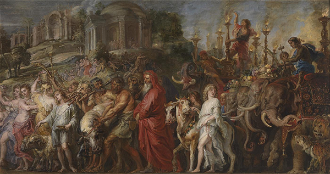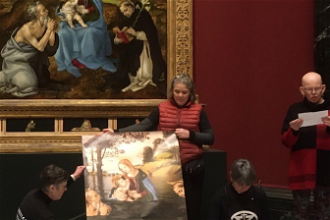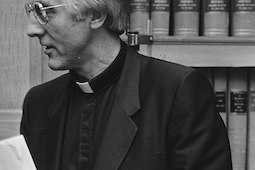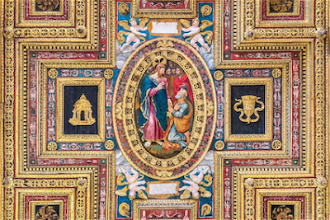Take One Picture 2017

Peter Paul Rubens, A Roman Triumph, about 1630 © The National Gallery, London
This summer, the National Gallery will showcase the work of children from across England in the 22nd annual Take One Picture exhibition. Take One Picture aims to inspire a lifelong love of art and learning by promoting the role of visual arts within education.
Each year the National Gallery encourages primary school teachers and children to focus on one painting from the collection and respond creatively to its themes and subject matter, historical context or composition. This year, Peter Paul Rubens's A Roman Triumph (about 1630) was chosen for the wide-ranging learning opportunities it offers across the curriculum.
Children's entries were inspired by the people, animals, and architecture they discovered in Rubens's work. From architectural studies and printmaking to ceramics and shadow puppets, the exhibition will feature a diverse range of works reflecting the richness of creative responses to the artwork.
A Roman Triumph, which is on display in Gallery A of the National Gallery, is directly inspired by Andrea Mantegna's The Triumphs of Caesar (London, Hampton Court, Royal Collection), which Rubens would have seen in Mantua as a young man, and also from woodcuts. Rubens's composition depicts a triumphal procession which was the greatest honour that could be given to a Roman general and was usually awarded to celebrate a great military campaign or victory. This painting is full of tumultuous movement and viewers are made to feel like spectators watching the parade from the roadside. The dancing maidens and animals on the right and left sides of the composition are abruptly truncated. This adds to the overall sense of movement and gives the impression that only a section of this continuous parade is made visible, that even more is happening outside of the frame.
Year 3 pupils from Kenmont Primary School, London, discussed the procession in the painting and the triumphs of the Romans throughout Great Britain. Children decided to make a concertina book of Roman triumphs in London following the route of the River Thames. Their art teacher explained, "The children learned that the Romans invaded England in AD43 and, having landed in Kent, they made their way to the River Thames. The Romans built a bridge over the Thames and there has been a 'London Bridge' in the same area ever since."
Year 1 pupils from Loughton Manor First School, Milton Keynes, focused on the animals in the painting and on the elephants in particular. Investigating the dimensions of a real elephant, they created their own life-sized female baby elephant sculpture. To construct their elephant, children calculated how many two-litre drink bottles were needed to make the legs. Two classes made the legs, while a third class made the elephant's bodyshell from chicken wire. Children dyed fabric to create elephant skin and created a felt headdress to finish the project.
Louis, aged 6, explains: "I really liked fixing the wire for the elephant body because I have never done something like this before."
Year 2 pupils from the same school focused their attention on the adornments worn by the elephants; in particular the saddle covers (jhools). Children studied many images of saddle covers, mostly from India, and explored pattern, colour, and materials used to make them. They discussed the cultural symbolism of certain colours and designed their own saddle covers using fabric paints and pens on calico. These were attached to a larger piece of fabric to produce a collaborative work - an elephant saddle cover large enough to adorn the life-sized baby elephant sculpture created by the Year 1 students.
Anna, aged 7, explains: "I loved making the design and choosing bright colours like the ones we saw on the Indian elephants."
Gill Hart, Head of Education at the National Gallery, says, "This year's Take One Picture exhibition is once again wonderfully imaginative and varied. Pupils, with their teachers, artists, and members of local communities have been inspired by Rubens's A Roman Triumph in multiple cross-curricular ways. The painting has enriched history, literacy, and numeracy projects. It has also been used to deliver art and design projects and contributes to the Gallery's commitment to advocating the role of art and design in education. We're humbled and delighted by the work produced as a result of the talent and commitment of these teachers and the imaginative enquiry of all the pupils who participate."
National Gallery Director, Dr Gabriele Finaldi, said: "The Take One Picture programme taps into the extraordinary creativity in a large number of schools across the country. I am thrilled that we are hosting the exhibition which showcases the work that teachers and children have done with Rubens's A Roman Triumph."
Schools represented in the 2017 display included: Our Lady Immaculate Catholic Primary School, Essex, Soho Parish Primary School, London and St Cuthbert's C of E Primary School, Leicestershire.
Take One Picture is supported by GRoW @ Annenberg, Annenberg Foundation, The Dorset Foundation, The Tavolozza Foundation, Christoph Henkel, and other donors.
Further information about the programme, related CPD courses for teachers and the annual Take One Picture exhibition at the National Gallery can be found at www.nationalgallery.org.uk/learning/teachers-and-schools





















